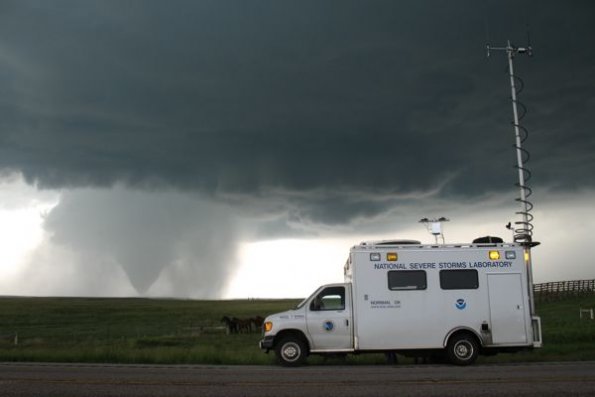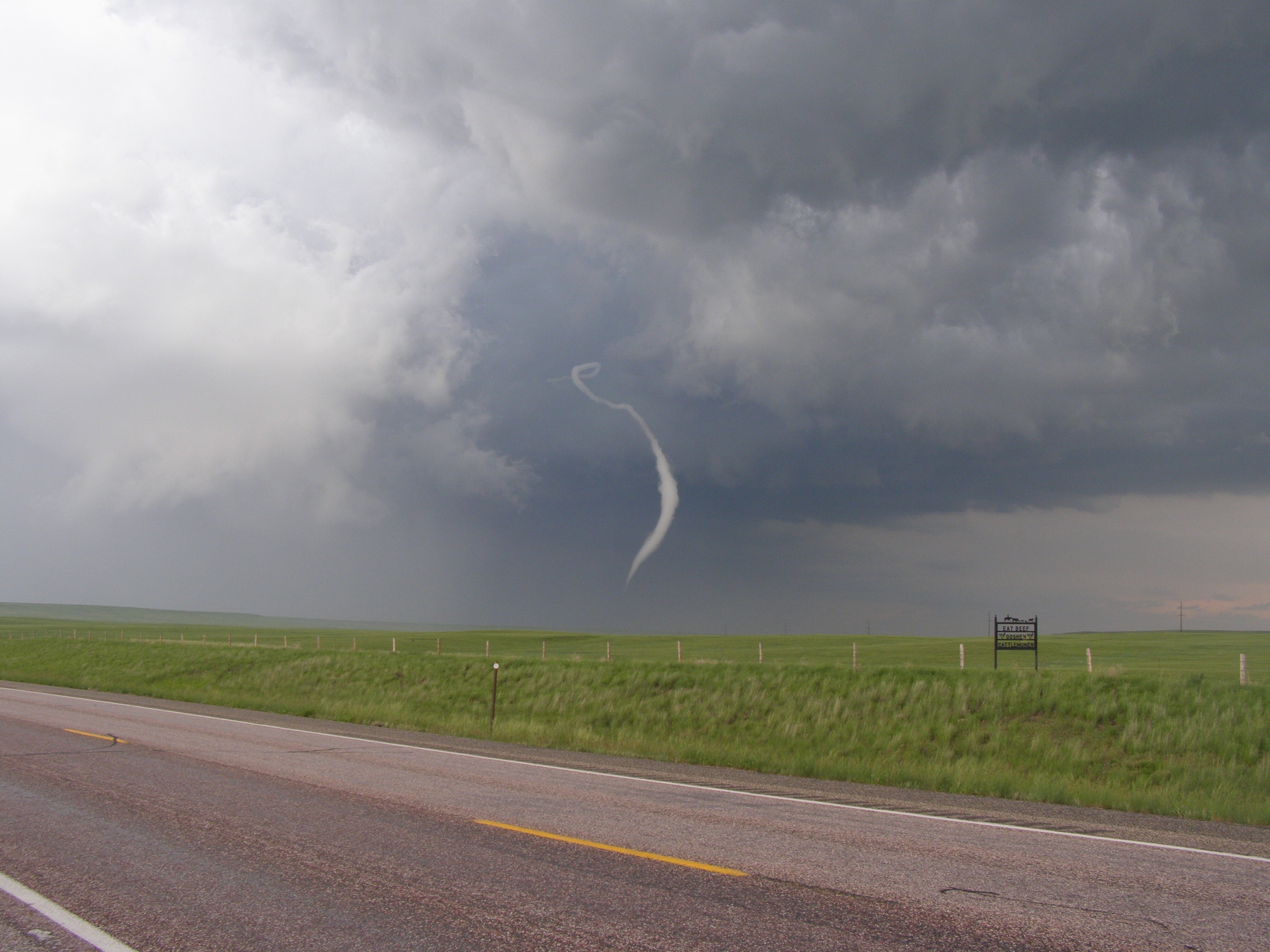 The March 18, 1925 Tri-State Tornado was unusually severe, killing 695 people while it was on the ground for a record 219 miles crossing parts of Missouri, Illinois and Indiana. Unfortunately, there is only one formal paper regarding the tornado and its meteorological setting.
The March 18, 1925 Tri-State Tornado was unusually severe, killing 695 people while it was on the ground for a record 219 miles crossing parts of Missouri, Illinois and Indiana. Unfortunately, there is only one formal paper regarding the tornado and its meteorological setting.
A team of eight severe storms meteorologists re-analyzed the event using all relevant U.S. Weather Bureau data on the Tri-State Tornado. The results, published in the Electronic Journal of Severe Storms Meteorology, revealed previous analyses of the surface weather conditions were inaccurate and led to misconceptions about where the tornado formed in reference to the existing weather system. The authors include retired NSSL Director Bob Maddox, retired NSSL/CIMMS researchers Chuck Doswell, Don Burgess and Charlie Crisp, retired Storm Prediction Center (SPC) meteorologist Bob Johns and current SPC meteorologist John Hart, and Steve Piltz from the National Weather Service Forecast Office in Tulsa, Okla.
The researchers concluded there was no singular feature in the meteorological setting that would explain the extreme character of the Tri-State tornado. The storms of 18 March were associated with a rapidly moving cyclone that was not unusually intense. The new analyses show a long-lived supercell that developed very near the center of the cyclone produced the tornado, possibly where a warm front and a distinct dryline intersected. The south-to-north temperature gradient was very pronounced due to cooling produced by early morning storms and precipitation. The tornadic supercell tracked at an average speed of 59mph moving farther away from the cyclone center with time. And, the storm remained very close to the surface warm front.
Researchers did find as the supercell and dryline moved rapidly eastward, the northward advance of the warm front kept the tornadic supercell within a very favorable storm environment for several hours. It appears this consistent time and space connection of the supercell, warm front, and dryline was extremely unusual.
With reanalysis beginning 70 years after the tornado, it was impossible to confirm the complete continuity of the damage path along the reported path. Even with extensive field work discovering 2,395 individual damage points, there were 32 gaps of at least one mile in length, but only 7 gaps longer than 2.5 miles in length. All of the longer gaps were in the Missouri portion of the path; within the sparsely-populated Ozark mountain area. Assuming that gaps shorter than 2.5 miles might still represent a continuous tornado, the continuous path was at least 174 miles long. Additional, previously unreported tornadoes were also found before the beginning and after the end of the Tri-State Tornado. The research also allowed for conclusion that the storm was a supercell; classic in its stages and high-precipitation in the later stages. The supercell also produced accompanying hail up to baseball size and non-tornadic damaging winds.


